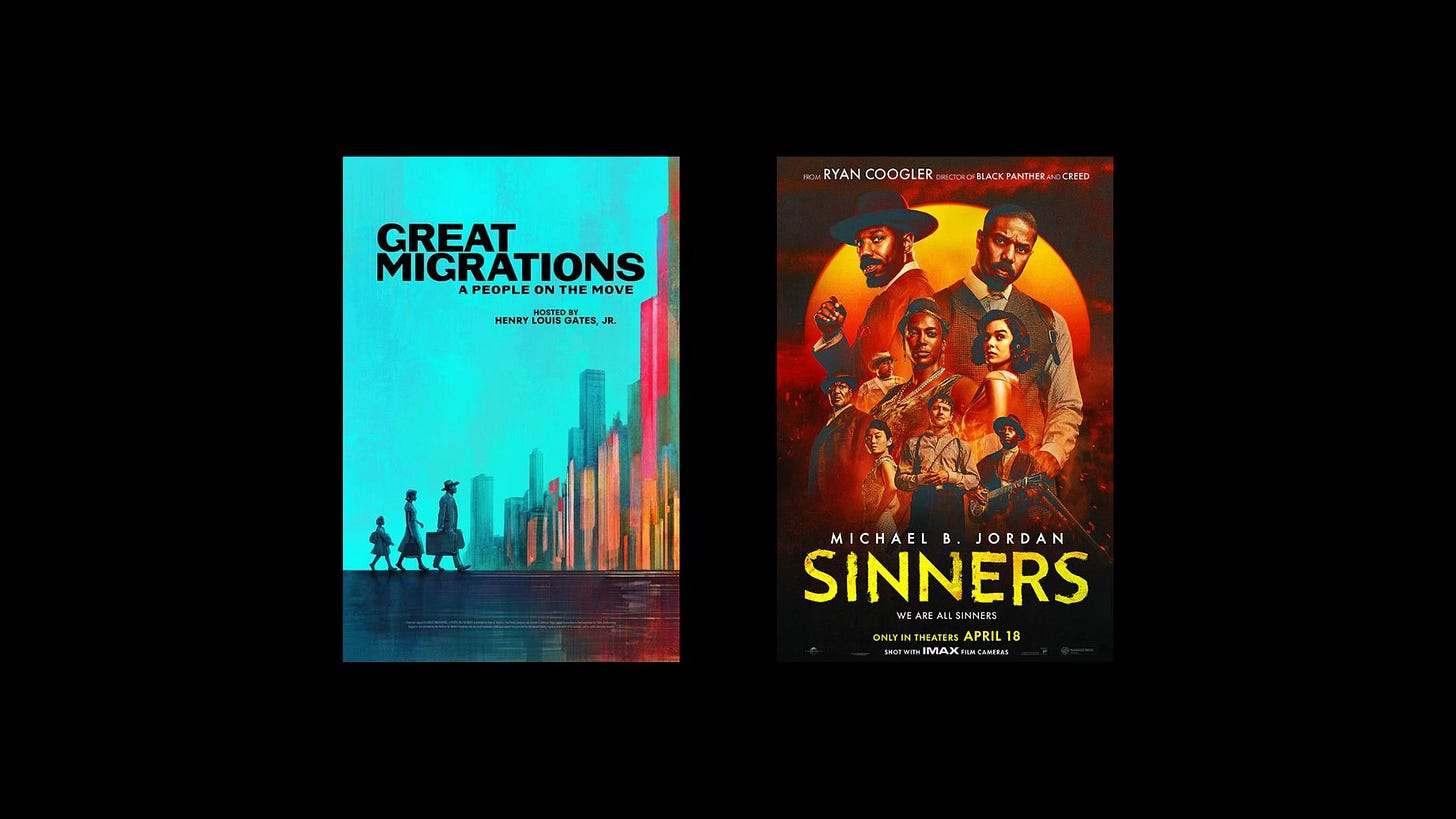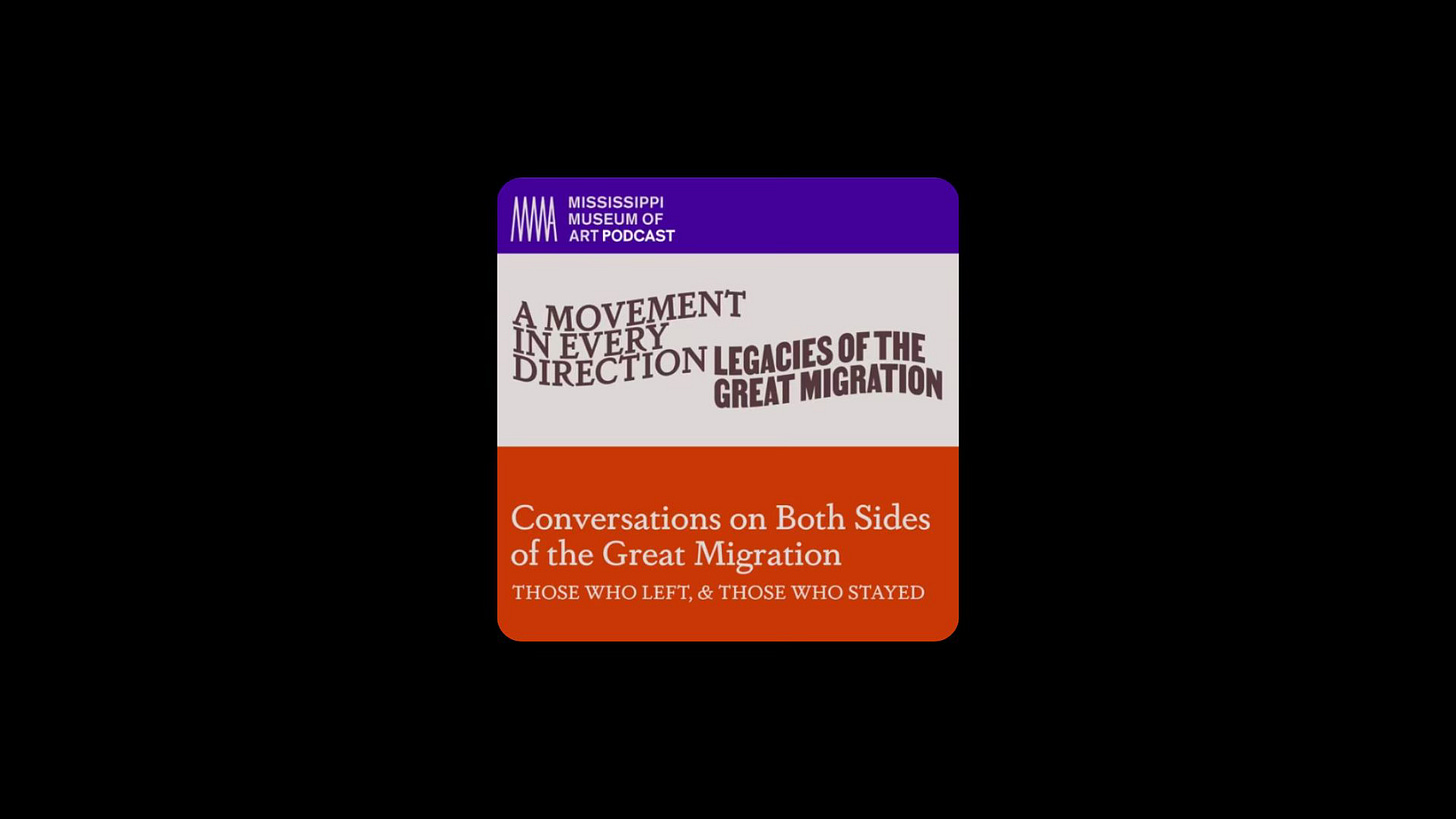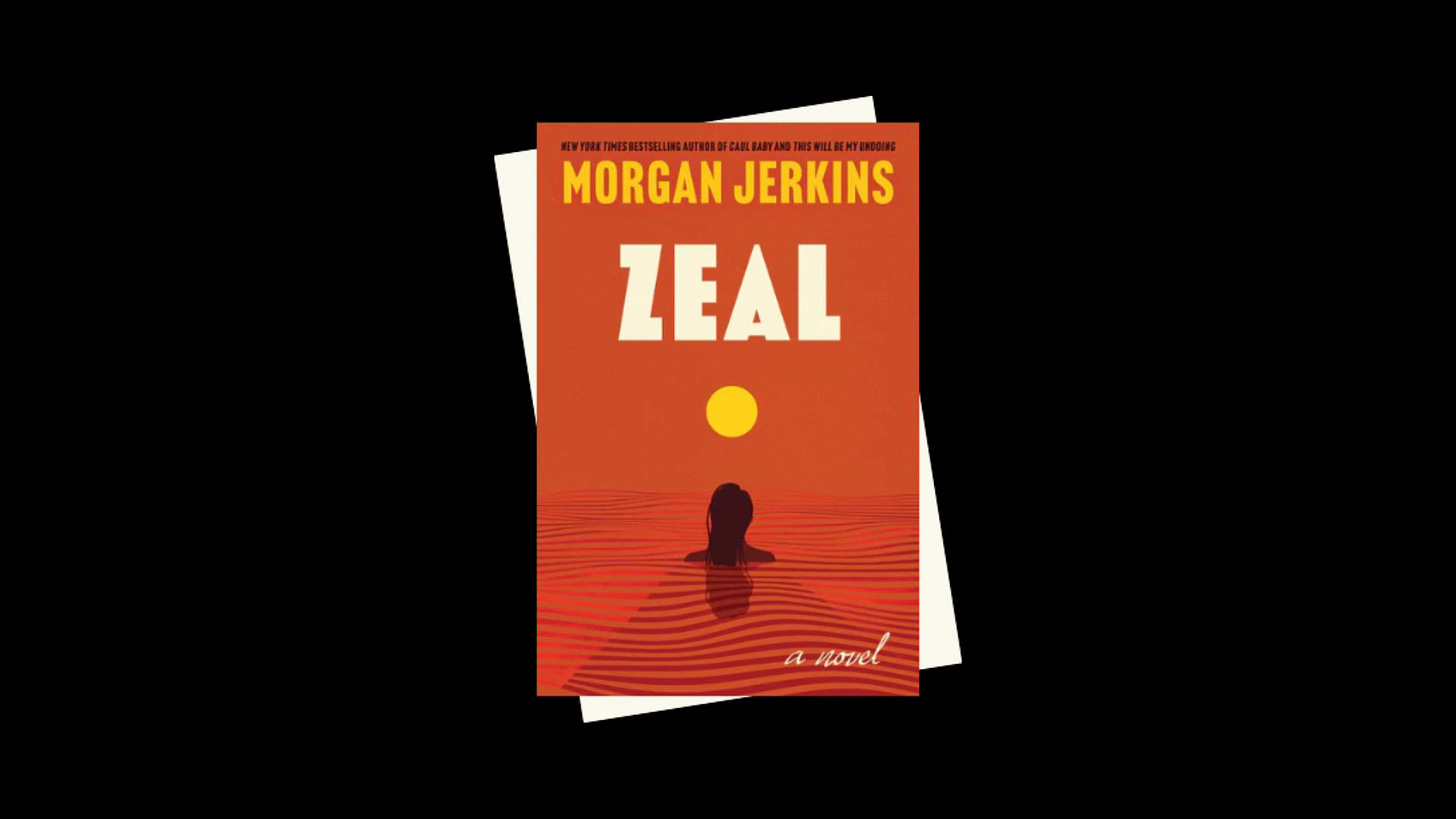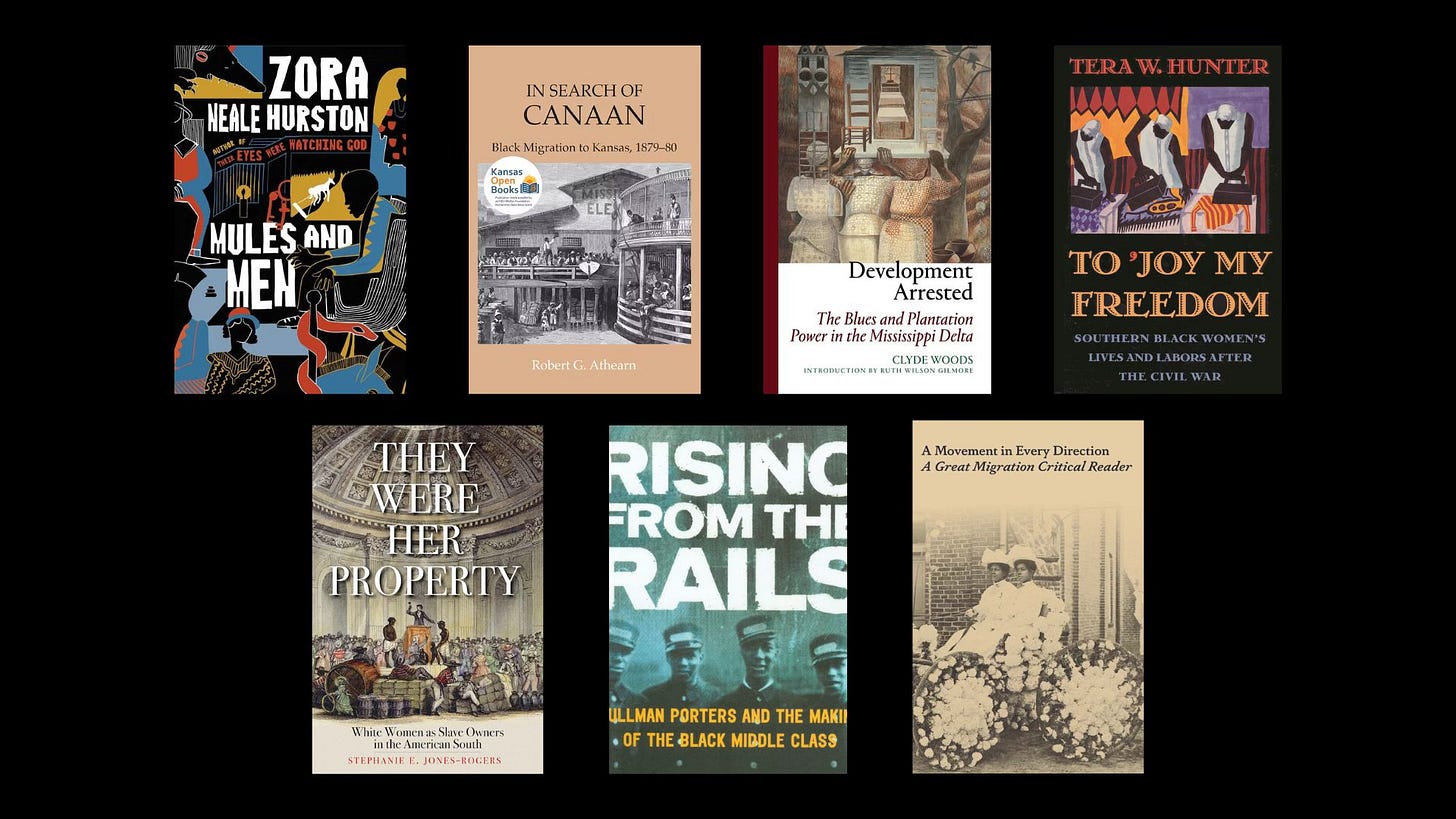My thoughts on Zeal by Morgan Jerkins
with books and other media the work made me think of
As a reminder, there is still time to bid on the works in Jupiter’s inaugural benefit auction, As Ever, In Orbit. More about the auction here as well as below.
Zeal by Morgan Jerkins is a book I absolutely enjoyed. A blurred genre text, Zeal is a work of historical fiction and romance that moves between 1865, 1912, and 2020. Those time periods correspond to major moments in African American and therefore American history—the end of the Civil War, the dawn of the Great Migration, and the height of the COVID-19 pandemic. Throughout Zeal, we follow a cast of characters: Ardelia and Oliver, Harrison and Tizrah and their family members and friends. Zeal is a love story, one that is equal parts sorrowful and joyful. I’m not going to give too much of the plot away though because I want you to go get the book and read it yourself!
In reading Zeal, it’s so clear that Jerkins spent a lot of time researching the places, historical moments, and social happenings that the characters in Zeal move through. As someone getting her PhD in History, I wanted a list of archives or a bibliography at the back of the text, and you can find some of that information in interviews or if you look up the works of the folks Jerkins says she spoke to during the research and writing process. The opacity of the research methods that went into producing the work is really my only note or critique of the text though and it’s barely a note because this is a work of fiction, historical fiction and giving the reader a list of archives and a bibliography is not a hallmark of the genre (even if I would like it to be based on where I’m reading from).1
Throughout Zeal, Jerkins approaches the institution of slavery, family separation in the wake of enslavement and the Civil War, generational trauma, drug addiction, and other historical happenings or life experiences with care for her characters and for the reader. Jerkins paints a picture of the horrors people experienced in a way that does not traumatize her reader and for that, I truly say thank you.
Zeal is beautifully written, well researched, and full of care. I highly recommend you read it. The book is 399 pages long and I am telling you the truth when I say that I read 340 of the pages in one day, once I got into the story (at around page 60) I couldn’t put the book down, truly.
In addition to some of my thoughts on the text, I want to share other materials that the books I’m reading make me think of here—think a light syllabus or reading list with other titles and media that would expand upon, shed light on the history behind, or just be nice to place in conversation with the text at hand.2 So, let’s get into those!
Non-fiction books and articles Zeal made me think of:
All That She Carried by Tiya Miles
In Zeal, Jenkins mentions pecan trees as a form of shade and sustenance for her characters and in All That She Carried, Miles discusses the historical significance of pecan trees during enslavement.
Mules and Men by Zora Neale Hurston
The dialogue in Zeal is written to match or approximate how people spoke in 1865, 1912, and 2020 which adds depth to the story and really puts the history in historical fiction. It’s also a hallmark of Zora Neale Hurston’s work.
They Were Her Property: White Woman as Slave Owners in the American South by Stephanie E Jones-Rogers
Jenkins is attuned to the tension that has historically existed between Black women and white women and They Were Her Property sheds light on where that tension comes from by attending to the history of enslaving white women.
Savings and Trust: The Rise and Betrayal of the Freedman’s Bank by Justene Hill Edwards
The Freedman’s Bureau features more in Zeal than the Freedman’s Bank, but Zeal still made me think of Savings and Trust.
Scenes of Subjection by Saidiya Hartman
There is a scene in Zeal that mirrors something Hartman discusses in Scenes of Subjection and that’s all I’m going to say about that. Read both books and then let me know if you caught it.
Houston Bound: Culture and Color in a Jim Crow City by Tyina Steptoe
Narrative of the Life of Henry Box Brown by Henry Box Brown
In Search of Canaan: Black Migration to Kansas, 1879-80 by Robert G. Athearn
To ‘Joy My Freedom: Southern Black Women’s Lives and Labors after the Civil War by Tera W. Hunter
To ‘Joy My Freedom by Tera W. Hunter is a history of Black women’s lives and labor, labor that was frequently of a domestic nature after the Civil War, so placing Hunter and Jenkins in conversation just makes sense.
The Site of Memory by Toni Morrison (included in The Source of Self Regard)
I don’t want to give away a major plot point by saying why Zeal made me think of this essay by Toni Morrison, but if you read the book and then read or have read the essay, you’ll get it.
Rising from the Rails: Pullman Porters and the Making of the Black Middle Class by Larry Tye
A Movement in Every Direction: A Great Migration Critical Reader3 edited by Jessica Bell Brown and Ryan N. Dennis
A Movement in Every Direction: Legacies of the Great Migration edited by Jessica Bell Brown and Ryan N. Dennis
The Great Migration in Historical Perspective: New Dimensions of Race, Class, and Gender edited by Joe William Trotter Jr.
Black Magic: Religion and the African American Conjuring Tradition by Yvonne P. Chireau
Various actions and behaviors of/by the characters in Zeal (again, I’m trying to give not too much away here) made me think of African American traditions and practices of hoodoo, rootwork, and conjure which made me think of Chireau’s work.
Development Arrested: The Blues and Plantation Power in the Mississippi Delta
by Clyde Woods
Black Moses: A Saga of Ambition and the Fight for a Black State by Caleb Gayle
Other media Zeal made me think of:
The Great Migration4 is a major plot point and historical event that informs Zeal. So, PBS’s Great Migrations: A People on the Move hosted by Henry Lewis Gates, Jr. and Sinners by Ryan Coogler both came to mind. Both projects engage with the Great Migration and would be great to think with while reading Zeal. The Mississippi Museum of Art also has a podcast or audio offering of conversations on both sides of the Great Migration that is enlightening to listen to and compliments Zeal well.


As a reminder, you can always grab a copy of any book I mention via my Bookshop. These are affiliate links and purchasing here does support my work.
Have you read Zeal? What did you think? Also, if there’s a book you think I should read and give the same treatment, let me know and I’ll see about adding it to my TBR.5 Comments are open!
You also can join me over on Storygraph if you’d like. It’s like Goodreads but better and Black-owned.
I’ll be back with…
more soon,
Gabrielle
I wrote a paper about the intersection of history and fiction in works of historical fiction or blurred genre texts and maybe I’ll share it here. The space between and the intersection of the two is something that is of increasing interest to me. So, if a lot of the books I share here end up being historical fiction, don’t say I didn’t warn you. There’s just something about the way fiction provides another entry point to exploring and thinking about history (when it’s done well aka well researched!!!) that is really compelling to me as a reader and a historian in training. Both genres of course have their place. I think we need works of history and we need works of historical fiction. And then of course critical fabulation (after Saidiya Hartman) as method enters the chat. There’s just a lot to think about here—history, historical fiction, critical fabulation as historical method—where each method, genre, or discipline meets and where they diverge, what we gain from each, what risks are involved, etc. etc. so on and so forth. I’ll stop here on this point for now. For more on the boundary between fiction and ethnography (which isn’t history initially but becomes it over time), see Narayan, Kirin. “Ethnography and Fiction: Where Is the Border?” Anthropology and Humanism 24, no. 2 (1999): 134–47. https://doi.org/10.1525/ahu.1999.24.2.134.
Zeal also made me think of Yaa Gyasi’s Homegoing as that is another generationally sweeping work of historical fiction focused on the African diaspora that also has a similar redemptive-arc (are those just a hallmark of the genre?). But, Zeal and Homegoing are different of course and after recently re-reading Homegoing with my historian hat on, I do have some notes or issues with the text. It’s still a beautiful book though, one I wish I could read again for the first time.
Here for an overview + installation images of A Movement in Every Direction: Legacies of the Great Migration which began as an exhibition and was co-curated by Jessica Bell Brown and Ryan N. Dennis. The exhibition was co-organized by the Mississippi Museum of Art and the Baltimore Museum of Art. Here (and below) for a conversation between the co-curators via Youtube.
I’m about to start James by Percival Everett and The Catch by Yrsa Daley-Ward.



